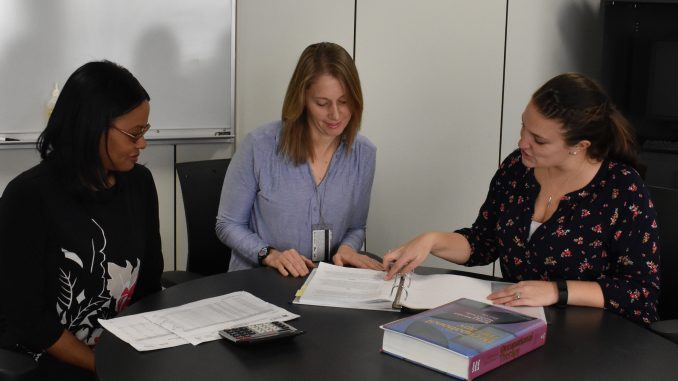
For some people diagnosed with a sensory processing disorder, walking down the street means suddenly hearing every noise at once — every car horn, every conversation, every ringtone and every click of high heels hitting the sidewalk.
Individuals with sensory processing disorder could be “easily distracted or bothered by noise,” or “might not like the feeling of certain clothing,” said Beth Pfeiffer, an occupational therapy professor.
“The sensory environment is so impactful,” she added. “Any time you go out, any time you are in a stimulating environment, that impacts your behavior and everything you do.”
Pfeiffer said she wants to help those most affected by sensory processing disorder: individuals with autism spectrum disorder.
The American Occupational Therapy Foundation announced in January that Pfeiffer will receive the A. Jean Ayres Award at the foundation’s annual conference and centennial celebration at the Pennsylvania Convention Center. The convention will take place March 30 to April 2. Each year, an individual who has conducted research or theory testing in occupational therapy receives the award.
The foundation’s CEO, Scott Campbell, said priority is given to nominees who have worked with sensory processing. The late Ayres, the namesake of the award, created the sensory integration theory, which explains how the neurological processing of sensory information affects a person’s behavior. Ayres worked to help those diagnosed with sensory processing disorder as an occupational therapist.
Campbell added that the award is given to “somebody that actually moves the field forward by what they do, as opposed to just doing what everybody else is doing.”
“Many of my mentors were trained by Jean Ayres,” Pfeiffer said. “She is certainly foundational to sensory integration work.”
In 2007, Pfeiffer began a sensory integration study to measure the effectiveness of sensory integration intervention, a form of therapy in which children interact with various sensory activities while the therapist observes their responses. The activities could enable children to regulate their behavioral responses when presented with sensations or situations they find unpleasant or painful. In Pfeiffer’s study, 37 children ages 6 through 12 received this treatment.
“For example, if they are engaged on a swing and they are hypersensitive to sounds, they might blow a kazoo or play a tune while swinging,” said Kristie Koenig, who worked on the study with Pfeiffer. Koenig also taught occupational therapy at Temple, but left after Spring 2007 and is now the chair of occupational therapy at New York University.
“There was very little work that was being done targeting the special needs population,” Pfeiffer said. “The prevalence kept increasing … I really wanted to be able to help that population.”
Pfeiffer also conducted the study with Moya Kinnealey, a former occupational therapy department chair, and Megan Sheppard, a 2009 master’s of occupational therapy alumna.
“At the time, Beth was able to do a very well-designed, randomized and controlled trial of intervention,” Koenig said. “We did not have lot of high-quality studies then, which is why Beth’s study was so innovative.”
Pfeiffer and her colleagues concluded that the children’s abilities to regulate their emotions in response to sense-stimulating activities significantly improved after the study. However, they also encouraged other researchers to create future studies with larger sample sizes.
One of Pfeiffer’s regular patients, Nathan, has also benefitted from sensory integration intervention. Nathan, now 8 years old, began seeing Pfeiffer for therapy when he was three.
“She’s really helped us bring Nathan to begin to understand and do some therapy techniques to manage his sensory system,” said Michelle Doherty, Nathan’s mother. “Nathan is in a much better place now than he was in the beginning.”
Although Nathan has improved, Doherty said their relationship with Pfeiffer will most likely be long-term because Nathan’s sensory processing disorder is “something that will always be a part of him.”
“Beth is wonderful,” Doherty added. “We love her and I can’t say enough about how much she’s helped not only Nathan, but our whole family.”
Meghan Costa can be reached at meghan.caroline.costa@temple.edu or on Twitter @Meg_costa19.


Be the first to comment